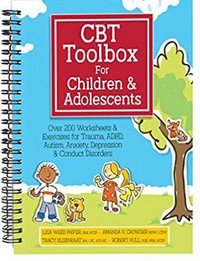It’s perennial: Difference between REBT & CBT???
 We are pleased to have Dr. Edelstein discuss the differences between REBT and CBT. We are pleased to have Dr. Edelstein discuss the differences between REBT and CBT.
Albert Ellis introduced Rational Emotive Behavior Therapy (REBT) in 1955, a radical change from the traditional therapies popular at the time. |
It has since spawned a number of offshoots, usually called cognitive-behavioral therapy (CBT). REBT and CBT coincide in a variety of ways. Their core notion affirms human emotions and behavior are predominantly generated by ideas, beliefs, attitudes, and thinking, never by events themselves. Consequently changing one’s thinking leads to an emotional and behavioral change.
There are also major differences between REBT and CBT:
1. REBT addresses the philosophic basis of emotional disturbance as well as the distorted cognitions (the focus of CBT), which makes it more powerful. As you uproot your absolutistic demands, your cognitive distortions get corrected.
 |
 |
 |
 |
For example, suppose you plan to ask someone for a 2nd date and you’re feeling anxious. You tell yourself: “She didn’t talk or smile much on our first date. I know she’s not interested.” Since there are multiple other explanations for her reserved behavior, which you don’t know by her actions, CBT calls this conclusion “mind-reading” and dismisses it as a cognitive distortion. Instead, REBT looks at the underlying reason you jump to this conclusion, for example telling yourself, “I absolutely need her acceptance and if she rejects me this would be awful, I could not stand it, and proves I’m a loser who’ll never succeed with any woman.” Giving up your dire need for acceptance would not only ameliorate you fears of rejection in future dating situations, but in virtually all interpersonal interactions. Going the CBT route of avoiding mind-reading proves significantly more limited.
| REBT posits three core demands fueling cognitive distortions and underlying emotional disturbance:
1.1. “Because I strongly prefer to, I absolutely must do well in life and get the approval of significant others or else I’m no good,” 1.2. “Because I keenly desire it, others absolutely must treat me well or else they’re no good,” and 1.3. “Because I passionately wish it, life absolutely must go well and or else it’s no good.” These demands create anxiety, depression, guilt, anger, resentment, procrastination, and addictions. The simple yet profound philosophic solution involves unconditional acceptance (UA): unconditionally accepting yourself with your flaws, unconditionally accepting others with their great imperfections, and accepting life unconditionally with it’s discomfort, hassles, and unfairness. |
 |
 |
|
2. REBT highlights the significance of secondary disturbance. Disturbing yourself about your disturbance is often the major factor in life-long (endogenous) depression, severe anxiety, and panic attacks. Most CBT ignores secondary disturbance. For example, you feel anxious about appearing anxious when requesting the date. You are worrying about worrying. 3. REBT presents an elegant solution to the self-esteem problem. It teaches unconditional self-acceptance (USA) rather than any type of self-rating. Most CBT therapists focus on bolstering their clients’ self-esteem by reinforcing some of their positive qualities. This strategy has many pitfalls including having low self-esteem when you do poorly, making invidious comparisons to others, avoiding risk-taking, smug-complacency, and preoccupation with proving, rather than enjoying, yourself. USA and avoiding the self-rating trap avoids the many problems with self-rating. USA consists of the philosophy of unconditionally accepting yourself as the imperfect human you are whether you do well or poorly, or others love or hate you. If you get fired, for example, rate your job performance as poor, but never overgeneralize to conclude you’re a poor or worthless person. You’re then able to evaluate your deficient (and positive) behaviors to focus on how to improve in the future. |
 |
 |
|
4. REBT is unique among CBT therapies in differentiating between self-destructive, inappropriate negative emotions vs. helpful, appropriate negative ones. Anxiety, depression, and anger are examples of the first type and intense sadness, deep sorrow, great concern, and regret instances of the second. For example, if you feel slightly anxious about arriving 5-min late, this is an inappropriate negative emotion because, in part, it comes from rigid, absolutistic thinking characterized by demands (musts, shoulds, have tos: “I absolutely must never be late for an appointment”). Alternatively, if you feel intensely sad, you cry, grieve, and mourn over the loss of a loved one, these are appropriate negative emotions. They come from passionate desires and preferences such as, “I strongly wish my lover had not died, how very, very sad and most unfortunate.” 5. REBT maintains that all anger, having a commanding and condemning, dictatorial philosophic core, some form of “others absolutely must treat me well or else they’re no good,” is unhelpful, feels bad, and sometimes quite destructive. It teaches individuals effective assertiveness and other appropriate alternatives to anger. CBT views some anger as healthy and appropriate. Although CBT teaches assertiveness, it fails to address the philosophic root of anger. |
 |
 |
 |
 |
For the above reasons and others the duration of REBT therapy tends to be briefer than CBT.
Read the Psychology Today article
 Michael R. Edelstein, Ph.D.
Michael R. Edelstein, Ph.D.
Clinical Psychologist
415-673-2848 (24/7)
htttp://ThreeMinuteTherapy.com
drmedelstein.threeminutetherapy@gmail.com
Dr. Edelstein conducts in-person, phone, and Skype REBT.
Author of Three Minute Therapy
Features help for anxiety, depression,
relationships, panic attacks and addiction
![]()
Originally posted 2017-09-15 00:00:57.
- Baby I Need Your Lovin’ . . .Really? - Sat 27 Jul 24
- Accentuate the Rational - Fri 26 Jul 24

2 Comments
Jimmy sez: Dear Dr Edelstein,
Excellent summary. Thank you
In Ellis’ last book, which he wrote with Dr Joffe-Ellis, he agreed with you when he said that the number one difference between REBT and CBT was UA (which is why I think the name should be changed to REBUT (he changed it to REBT from RET when he added Behaviorism – and REBUT is a lot easier to remember and apropos)).
Please excuse my nit picking: Please permit me to question your modifiers: “intense”, “deep”, and “great” in regards to sorrow, etc. To my mind, these are irrational, exaggerating modifiers. I feel that it would be better to use the word, “appropriate”. Of course, you may hold a different view of the intensity of these modifiers. You do not go anywhere near this far, but allow me to add a bit of humor:
“When I use a word,” Humpty Dumpty said in rather a scornful tone, “it means just what I choose it to mean — neither more nor less.”
“The question is,” said Alice, “whether you can make words mean so many different things.”
“The question is,” said Humpty Dumpty, “which is to be master – – that’s all.”
While Carroll uses exaggeration humor, Korzybksi is scientific:
“Since Einstein and the newer quantum mechanics, it has become increasingly evident that the only content of ‘knowing’ is of a structural character.
“The only link between the verbal and objective world is exclusively structural, necessitating the conclusion that the only content of all ‘knowledge’ is structural. Now structure can be considered as a complex of relations, and ultimately as multi-dimensional order. From this point of view, all language can be considered as names for unspeakable entities on the objective level, be it things or feelings, or as names of relations. In fact, even objects could be considered as relations between the sub-microscopic events and the human nervous system. If we enquire as to what the last relations represent, we find that an object represents an abstraction of a low order produced by our nervous system as the result of a sub-microscopic events acting as stimuli upon the nervous system.”
Again, thanks for this “great” synopsis on REBT vs. CBT!!!
May I forward this?
jimmy
Dr. Edelstein sez:
Hi Jimmy,
I appreciate your kind words.
Thank you for reminding me of UA, which I neglected to include. I plan to revise the article to do so. Great point!
Yes, please send it far and wide!
Warm regards, Michael